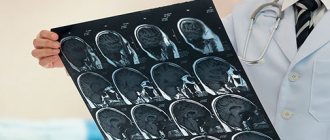- Changing mode
There are many reasons why the cheek becomes numb. Numbness is not always associated with any disease. More often, the phenomenon occurs for a short time, due to an uncomfortable position of the head, prolonged sitting in an uncomfortable position, during an attack of fear or panic. Less commonly, the cheek becomes numb due to damage to the nervous tissue or vascular pathology. If a symptom occurs frequently, you should consult a doctor to determine the cause and prescribe treatment.
Most often, cheek numbness does not require treatment, but there may be exceptions.
Not a sign of illness, but a temporary glitch
Sometimes the problem is not so bad if it is not directly related to health. In some situations, numbness in the head is considered normal, since overstrained muscles are to blame.
Short-term numbness or tingling is usually observed after waking up if the person took uncomfortable positions during sleep.
Being in one position for a long time (for example, sitting at a computer), the muscles experience severe tension and become “numb.” Compression or pinching of the nerve may also occur.
A feeling of numbness in the head and goosebumps are considered normal even with sudden movements of the neck. In such a situation, the blood vessels experience an unexpected spasm.
Each of these moments is accompanied by disruptions in the blood circulation of the brain, which sometimes leads not only to numbness, but also to dizziness. The condition, which is considered normal, lasts for 10-15 minutes. It is enough to wait until the discomfort passes.
Temporary disruptions can be caused by exposure to certain medications. Numbness of the head is often accompanied by taking statins. It is enough to stop taking them, and the symptoms will go away on their own.
Physiological causes of numbness
Numbness occurs with prolonged immobility. Whatever position we are in, some vessels become pinched, and we risk that the nerve endings, which do not receive proper nutrition, will lose sensitivity. Our body must move, changing the areas that have been subjected to compression, and then we will not be in danger of numbness. This usually happens during the day. But during deep sleep, we can lie in the same position for quite a long time without changing posture. And then, when we wake up, we notice that we have rested some part of our body, for example, a hand placed under our head.
Numbness is caused by exposure to cold. When in contact with cold air, the skin loses sensitivity. Local blood circulation is disrupted, and we cease to feel the nerve endings. If this situation lasts longer, frostbite is possible, but in most cases it is enough to rub the area of skin that has lost sensitivity or return to warmth, blood circulation will be restored and the numbness will go away.
If numbness occurs without an obvious connection with a specific situation, then it probably has a pathological cause.
Neurological and other diseases
There are many reasons why the head goes numb in one part or another, but very often this is a symptom of one of the neurological diseases:
- Often this condition is accompanied by problems of the cervical spine. The most common disease in this area is osteochondrosis , which leads to pinched nerves, which provokes not only discomfort in tactile sensations, but also stiffness in head movements.
- Vascular diseases of the brain and cerebrovascular disease are another diagnosis in which the described symptom is present.
- Such symptoms are also observed with head and spinal injuries . Injuries to the back or cervical region, as well as the head, are accompanied not only by “goosebumps” on the body, but also by severe pain, paralysis and many other symptoms.
- It cannot be avoided without numbness of the scalp and with neuroinfections .
- multiple sclerosis develops , the essence of which is the replacement of nervous tissue with connective tissue. This results in numbness of the skin on the head, poor sensitivity of the limbs, and incoordination.
- Tumors of the head or spine , growing, begin to put pressure on neighboring areas, expanding their space. Nerves and blood vessels come under pressure (and displacement), and metastases penetrate the tissue. The processes are accompanied not only by numbness, but also by very severe pain.
The most serious diseases for which numbness is a mandatory symptom relate to the field of oncology. The tumor can be localized in the cervical region or in any part of the brain.
Numbness, goosebumps and tingling are manifestations of sensitivity of the scalp, and the longer such sensations last, the more compelling the reasons that provoke them should be.
The most harmless are colds associated with hypothermia.
Heart disease, hypertension, excess weight lead to disruption of normal blood circulation, which causes vasospasm, resulting in numbness. This condition can be regarded as pre-stroke.
It is impossible to diagnose or eliminate all these factors independently (without the participation of doctors). Therefore, traditional treatment is excluded a priori here.
Treatment methods for loss of sensation in the head
The scope of treatment for loss of sensation in the head completely depends on the disease. For example, for the most common disease – osteochondrosis, the following is prescribed:
- painkillers from the group of non-steroidal anti-inflammatory drugs: Diclofenac, Ketonal, Ibuprofen;
- relaxing muscles: Mydocalm, Sirdalud;
- decongestants: Hypothiazide, Lasix;
- stimulating metabolic processes: Rumalon, Actovegin;
- improving nerve functions: Milgamma, Berlition;
- facilitating venous outflow: Troxevasin, Aescusan;
- normalizing microcirculation (Trental, Xanthinol nicotinate);
- activating the transmission of nerve impulses: Neuromidin.
The required group of drugs is selected based on the prevailing symptoms. In addition to medications, it is recommended to wear a Shants collar to relieve the load on the spine. Physiotherapy helps well - in the acute stage, UHF, the introduction of Hydrocortisone with ultrasound, acupuncture, and during the recovery period massage and physical therapy are indicated.
A similar approach is used in the treatment of neuritis and neuralgia. If there is a tumor process, a herniated disc, or spinal instability, surgery is needed. It is also recommended if the full course of drug therapy is ineffective.
If the cause of numbness is cerebral vascular disease, then the following drugs are used:
- cholesterol-lowering drugs (Vasilip, Roxera);
- calcium channel blockers (Corinfar, Nimotop);
- improving cerebral blood flow (Pentilin, Bilobil);
- reducing blood viscosity (Curantil, Aspirin);
- protecting against lack of oxygen (Nootropil, Ceraxon);
- B vitamins (Neurobion, Milgamma).
Features of the clinical picture and localization of sensations
When numbness of the head does not belong to the category of normal, then we are talking about the clinic, the etiology of which can only be determined by a doctor.
Having assessed the nature of the symptoms, the location of the sensations, taking into account the presence of specific diseases, as well as carrying out the appropriate diagnostics, the specialist will render his verdict.
Numbness of the head can be complete, but sometimes only a specific part of it is affected, which indicates dysfunction of certain organs. The nervous system most often affected is:
- If the left or right side of the head goes numb, then the culprit may be vessels in which blood circulation is impaired, or pinched nerves. But sometimes the cause is brain pathologies and cerebral tumors.
- If the back of the head , then usually the cause is cervical osteochondrosis or other disorders of the cervical region.
- Numbness and tingling in the front of the head is caused by inflammation of the trigeminal nerve. A sign of this is pain radiating to the jaw, ear and eye.
- The frontal part is affected by increased intracranial pressure.
A problem localized to only one side of the head indicates a pathology of the cerebral structure. In this case, the focus is concentrated in the opposite area of the skull.
Treatment
Conservative therapy
Treatment tactics depend on the causes of chin numbness. Patients with trigeminal neuralgia are prescribed anticonvulsants. The dosage is gradually increased until a therapeutic effect is achieved. Reception is continued for several months, and then the dose is gradually reduced. The regimen is supplemented with antihistamines, antispasmodics, and means to improve microcirculation. Blockades are performed according to indications. Among the effective physiotherapeutic techniques are diadynamic currents, galvanization, and ultraphonophoresis.
To relieve a migraine attack, NSAIDs are used; in severe cases, drugs from the triptan group are used. For repeated vomiting, antiemetics are used. To prevent paroxysms, long-term treatment with antidepressants and anticonvulsants is carried out. For herpes zoster, antiviral therapy is administered with acyclovir. Mental disorders are corrected with the help of psychotherapy, sometimes in combination with psychotropic drugs.
Antibiotics are indicated for wounds, open fractures, and osteomyelitis of the jaw. First, broad-spectrum antibacterial drugs are used, and later the medication is replaced taking into account the antibiotic sensitivity of the pathogen. Patients with pernicious anemia require lifelong treatment with B12 drugs, elimination of conditions that led to the development of vitamin deficiency.
Diagnostic measures
A multifaceted examination of the patient’s condition will help the doctor determine the location of the source of the problem and its cause. In addition to visual diagnosis and analysis, a differential study is added, which allows one to completely determine the cause and extent of the lesion.
Set of research procedures:
- start with a general blood test , which allows us to identify a lack of vitamin B12 in the body and the presence of iron deficiency anemia;
- instrumental studies such as radiography and spiral computed tomography will make it possible to assess the condition of the brain, skull, spine and identify pathologies if they are present;
- Electroneuromyography will help find the damaged nerve ;
- Doppler ultrasound makes it possible to assess the condition of blood vessels and help diagnose diseases of the cardiovascular system;
If after these studies and tests the picture remains not completely clear, the doctor will prescribe additional procedures based on the patient’s condition.
Diagnostics
The diagnosis is made by a neurologist. According to indications, the patient is referred to a dentist, maxillofacial surgeon or hematologist. To clarify the cause of chin numbness, the following diagnostic procedures are performed:
- Neurological examination
. With neuralgia, trigger points are determined at the exit points of the nerve branches. A comprehensive study of sensitivity, reflexes and muscle strength can detect neurological deficits indicating damage to brain structures. - Dental examination
. Informative for injuries, osteomyelitis of the jaw. It makes it possible to confirm the presence of a fracture and identify the disease that provoked the development of a pathological process in the bone. - Radiography
. In case of injuries of the maxillofacial area or osteomyelitis, photographs of the lower jaw are taken. If damage to the spinal column is suspected, an X-ray of the cervical spine is performed. - CT scan
. It is used to clarify the volume and localization of traumatic and inflammatory foci in the area of the skull and lower jaw, and to detect degenerative processes in the spine. Effective in identifying narrowing of the canals through which the trigeminal nerve passes. - Magnetic resonance imaging.
Recommended for cerebral tumors. Visualizes cysts and neoplasms. To confirm the vascular etiology of nerve compression, MR angiography is prescribed. - Lab tests
. For pernicious anemia, a biochemical blood test, tests for antibodies to intrinsic Castle factor and gastric parietal cells are indicated. In case of tumors, a morphological study is necessary to establish the nature and degree of differentiation of neoplasia. In inflammatory processes, culture of the discharge is required to determine the microflora.
Physiotherapy
First aid
When there is short-term numbness of the head, which is normal, you can relieve tension with a light massage.
If there is discomfort caused by pathology, this will not work - you must first eliminate the cause (and only a doctor can identify it). You should not look for ways to “help” yourself, so as not to harm yourself even more with self-medication.
The main step that the patient must take is to immediately go to a medical facility. If you cannot do this yourself, you must call an ambulance.
4.Treatment
It is easy to see that with the number and variety of possible causes for the development of paresthesia described above, it is impossible to indicate universal therapeutic regimens (or at least general approaches to its treatment). Prescriptions, of course, take into account the entire array of diagnostic data obtained. In some cases, vitamin therapy may be sufficient, in others it is impossible to do without vertebrological or neurosurgical oncology intervention, in others, the only solution may be a change of job (if, for example, the profession is associated with chemical hazards). If paresthesia occurs against the background or as part of a chronic disease of the endocrine, cardiovascular or other system, it will be necessary, first of all, to treat and/or relieve the exacerbation of the underlying disease.
However, in any case, if any unusual, unusual, outwardly inexplicable sensations in the skin occur, you should definitely consult a doctor, since paresthesia sometimes turns out to be only a harbinger of much more serious problems or the tip of a formidable iceberg, which for the time being does not manifest itself in anything else.
When do you urgently need to see a doctor?
Not everyone perceives periodically occurring long-term numbness and tingling in the head as a reason to see a doctor. But when the following accompanying symptoms occur, it’s time to sound the alarm:
- Tingling and numbness are often accompanied by dizziness and lightheadedness . Here, constant drowsiness, general weakness and unsteadiness of gait are possible.
- Nausea appears, often ending in vomiting . It is difficult for the patient to control the bladder - it is emptied involuntarily.
- , musculoskeletal dysfunction may occur . Problems arise either in individual parts of the body, or complete paralysis occurs.
- Difficulty with movement also affects speech , the tongue becomes numb, and it is impossible to understand what the person is saying.
Even one of the factors described is already a serious reason to visit a neurologist or surgeon if it is related to injury.
3. Symptoms and diagnosis
Actually, paresthetic sensations are described quite fully at the beginning of the article. In a generalized form, paresthesia can include any sensation in the skin (or under the skin) in which there is no directly observable stimulus in this area. As a rule, paresthesia does not include pain, which is also often accompanied by lesions of the nerve pathways (for example, with herpes zoster).
Paresthesia is diagnosed based on a careful study of the history and sensations verbalized by the patient during a clinical interview and examination (sometimes the condition of the skin in the disturbing area is significant). Skin sensitivity as such must be examined: areas of slightly or insensitive skin are often found. To clarify the nature and localization of the causes of paresthesia, electroneuromyography may be prescribed, as well as, if indicated, tomographic studies of the brain and/or spinal cord; toxicological, virological, biochemical laboratory tests, etc.
About our clinic Chistye Prudy metro station Medintercom page!
Treatment approach
Complex treatment is prescribed only after a complete examination of the patient. The doctor prescribes medications individually for each patient, taking into account the reasons that led to numbness of the head.
The first step in therapy will be blocking pain, reducing temperature (if present) and administering drugs that restore circulatory function.
If numbness is a symptom of one of the diseases, then the main goal will be to treat this disease. In some cases, you will have to settle for long-term therapy and no less long-term rehabilitation.
A positive treatment outcome in this situation will depend not only on the doctors, but also on the patient himself, who takes full responsibility for his condition.
The symptoms described above should not be ignored. The sooner the patient goes to a medical facility, the easier and faster the treatment will be. Every day of delay reduces the chances of recovery and provokes serious consequences.
What to do
To get rid of unpleasant sensations, you need to identify their cause.
In most cases, it is enough to adjust the regime - take breaks from work, exercises to strengthen the neck muscles, choose a comfortable pillow.
If numbness is a symptom of the disease, treatment is selected depending on the etiology.
Changing mode
The following recommendations will help you get rid of this unpleasant symptom:
- normalization of the work and rest regime (take short breaks every 45 minutes of work);
- physiotherapy;
- massage of the collar area;
- properly selected pillow and mattress.
Following these recommendations will relieve sensitivity disorders if there is no organic cause.
Drug treatment
Treatment consists of eliminating the cause, that is, the underlying disease. Symptomatic therapy is not provided.
| Disease | Treatment methods |
| Transient ischemic attack | The main goal of treating TIA is to restore normal blood flow. The following drugs can be used for this: · antiplatelet agents (Aspirin, Clopidogrel); · indirect anticoagulants; · infusion therapy. It is also important to treat concomitant diseases that increase the risk of stroke - arterial hypertension, atherosclerosis and diabetes. |
| Trigeminal neuralgia | For treatment, antiepileptic drugs are used - Carbamazepine, Oxcarbazepine. Additionally: · anti-inflammatory drugs; · painkillers; · sanitation of the oral cavity. |
| Osteochondrosis | Treatment of osteochondrosis is complex: · drug therapy, which includes anti-inflammatory drugs, muscle relaxants, B vitamins; · physiotherapy; · fixation of the cervical spine (Schanz collar). |
| Migraine | Drug treatment includes the following drugs: · analgesics (Solpadeine, Ibuprofen); · serotonin inhibitors (Naratriptan, Sumatriptan); · beta blockers (Metoprolol, Propranolol); · antidepressants (Amitriptyline). |










